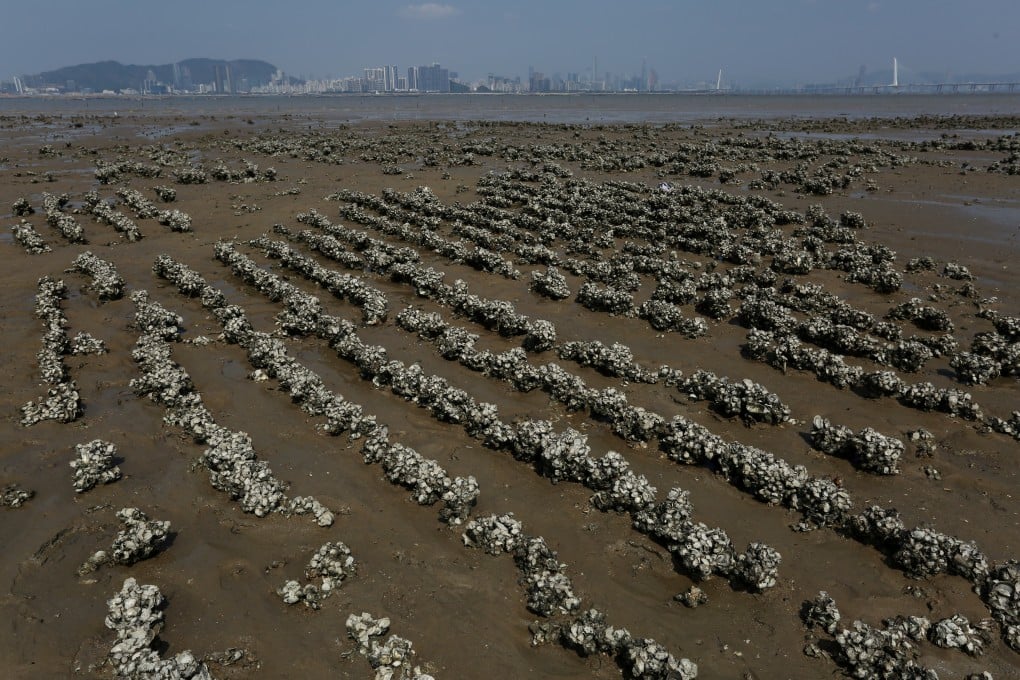Advertisement
Hong Kong oysters served up as natural defence against flooding caused by climate change
- Project hails the shellfish reefs as nature’s solution to coastline impact of climate change
- Conservationists say the oysters act as a barrier to slow storm surges and protect communities from rising sea levels
Reading Time:3 minutes
Why you can trust SCMP

As the tide rolls out in Deep Bay, neat rows of grey, clustered oysters are revealed, stretching a kilometre across the mudflats along the coast of Pak Nai in the New Territories.
Environmentalists believe the bunches of shellfish could play a key role in protecting Hong Kong’s coastlines from the effects of climate change, including the rise in sea levels and increasingly damaging flooding brought by extreme storms.
“We think the oyster reefs are one of the solutions to climate change,” said Joe Cheung Ho-yi, conservation education manager of The Nature Conservancy (TNC), an international non-governmental organisation that is working in Hong Kong.
Advertisement
The reefs, which can rise up to three metres, can act as a first barrier to slow storm surges and minimise damage to coastal communities, she said.

The shellfish at Pak Nai were first cultivated by farmers hundreds of years ago. TNC is embarking on a project to restore the reefs and Hong Kong’s 700-year-old oyster farming tradition.
Advertisement
Advertisement
Select Voice
Choose your listening speed
Get through articles 2x faster
1.25x
250 WPM
Slow
Average
Fast
1.25x